Planting and caring for phlox outdoors
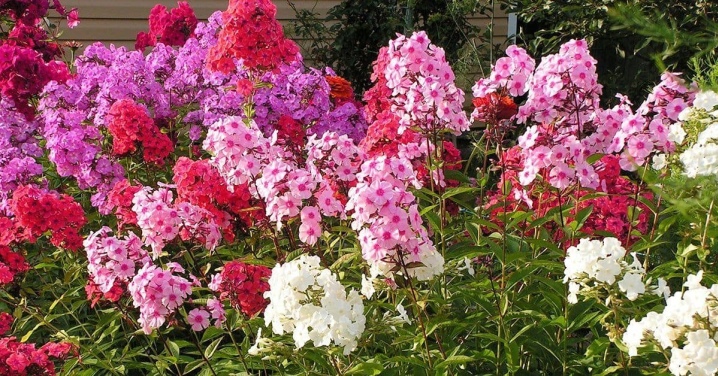
The herb phlox can often be found in gardens and summer cottages. The popularity of the flower is due to both its decorative appearance and the lack of strict requirements for outdoor care. Novice florists often begin their acquaintance with the basics of agricultural technology with phlox. Consider how to correctly plant and grow the presented culture.
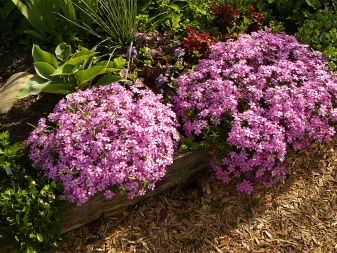
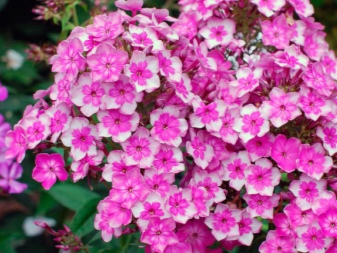
Landing dates
The recommended time for planting is early spring. If planting is planned in the south, then you can start the procedure as early as early April. When grown in the suburbs and the middle lane, planting is carried out in the second half of April and early May - during these months the soil is already sufficiently warmed up. If planting is carried out in Siberia or the Urals, then from mid-May you can dig up a flower bed and start planting.
It is allowed to plant in the fall, however, during this period, buds are laid in the culture, which means that it is important to transplant at least 1.5 months before the onset of frost. When planting at the end of the season, remember to prune: about 1/3 of the upper shoots must be eliminated even before the "move".
Planting in summer is possible, but for this you should use a seedling with a large earthen clod, after cutting off the tops, especially if the procedure is carried out during the flowering period.
The plant should spend all its energy and strength on rooting and getting used to a new place, and not on the development of flowers.

Seat selection
The culture grows well both in open space and in partial shade. The most successful location is a place near shrubs or rare trees, which will create a light shade during hot hours. Besides, snow will accumulate on this site in winter, which will warm the flowers and help them survive the cold season.
Ideally, the crop should be planted on a slight slope so that water does not collect here during the thawing of precipitation. It is better to avoid slopes where the soil quickly overheats and dries up, besides, in this place the plant will not be hidden from the wind, and in winter it can freeze. Do not use areas under the tops of trees with shallow root systems.
A flower bed can be arranged from the east, south-east, south-west or west side of the house. The northern wall of the structure or the shade of conifers is the least preferred option.
In general, the culture is not picky about the choice of place and can grow in the shade, however, you can hardly expect a lush and abundant flowering from such a shrub.
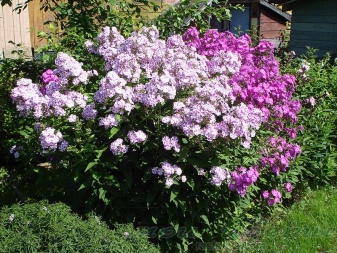
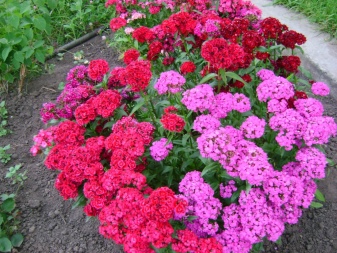
Next to what to plant in a flower bed?
Phloxes look aesthetically pleasing in both single and group plantings. For example, you can plant several seedlings in one bush that differ in the color of the petals - then the garden will sparkle with various colors, filled with light and brightness. Picturesque paintings are created by planting phloxes next to conifers or exotic crops such as knifofia.
If a gardener is planting a monochromatic variety, then you can emphasize it on a green background - this will create an impressive effect. For a rhythmic planting, the use of culture in the mixborder technique is suitable. Including phlox in the country in a flower arrangement, keep in mind that during the day the shade of the petals can change, for example, from blue to purple.
Phlox go well with other plants: irises, daylilies, meadow geraniums or astilbe. The subulate varieties are good for decorating alpine slides, and the paniculate look is good for improving the appearance of an unsightly landscape.
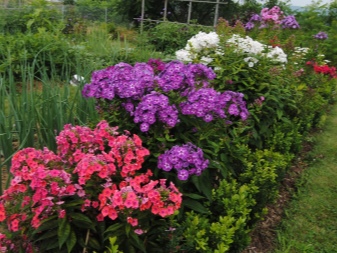
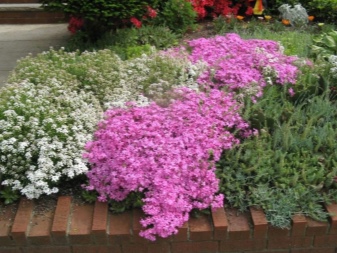
Consider the differences in flower care when composing your composition. So, phloxes are moisture-loving plants, and if they are too close to other crops, they will experience a constant moisture deficit.
Soil preparation
The most preferred type of soil is medium loamy fertile soils. Flowers will develop well in loose and damp areas with acidity up to pH 7.0. If a spring planting is planned, then the preparation of the flower bed is carried out in the fall. When planting in autumn, the land is prepared in 2-3 weeks.
Site preparation begins with the removal of debris and weeds. Next, you should prepare a nutrient mixture consisting of compost, ash, lime, peat, river sand, mineral fertilizers. The prepared composition is applied to the soil. Then the ridge is carefully dug up.
If a flower bed with silty, clayey or other heavy soil is used for planting, then sand can be used to loosen it. If the composition is too light, for example, sandy, the soil is diluted with manure, peat or clay.
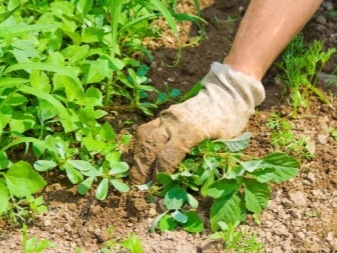

Avoid rotted sawdust or wood chips when preparing the site, as this type of fertilizer can become a source of pathogenic bacteria.
How to plant correctly?
If warm weather without precipitation is observed before planting, then the selected place should be thoroughly moistened, and after drying, loosen with a cultivator to a level of 12-15 cm.
The landing pattern is one-, two- or three-line ribbons spaced 60-80 cm apart. The gap between the lines should be 35-50 cm, and between the seedlings - 30-40 cm.
When planting planting material, it is required to smooth out the root system well. Place the seedling in the hole in such a way that after the compaction and subsidence of the soil, the formed eyes are deepened by a maximum of 4-5 cm, otherwise they will develop poorly. Further, the planting site is moistened, spending at least 15 liters of water per 1 m2 of planting, and mulch with peat or peat compost with a layer of 4-5 cm.
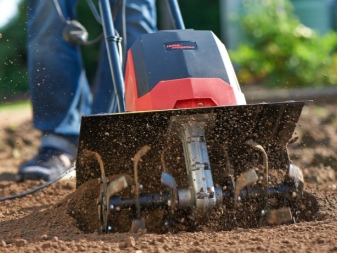
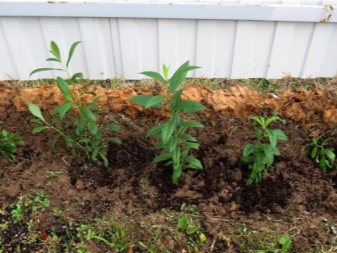
You can plant perennial plants by cuttings. This is permissible throughout the entire period of active growth. When the stem has grown by 5 cm, it is time for cuttings. The end of the trial is dated September. Cuttings obtained in early spring or in summer are considered the most promising.
Reproduction is allowed by layering. Even before flowering, the shoot is tilted to the ground, fixed along its entire length and sprinkled with a mixture of peat and humus. In the fall, a young sprout can be separated from the parent bush and transplanted to a permanent place.
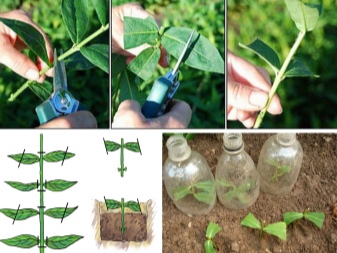
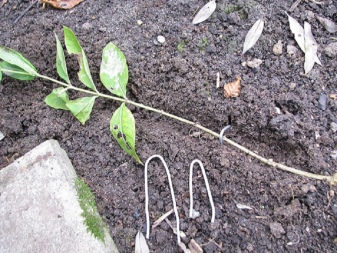
Care features
It is not difficult to take care of phlox; it is enough to perform a number of procedures.
Watering and humidity
The first time after planting, it is important to control the moisture content of the soil. Too frequent watering in small portions can provoke excessive soil compaction. And also do not get carried away with loosening, otherwise fragile young seedlings can be injured. When watering, pour water under the root. The recommended portion is 15-20 liters per 1 m2. The water should not be cold - when watering with cool water on a hot day, the shoots may crack at the plant.
The layer of mulch applied after planting will keep moisture in the ground and improve aeration.
As a mulch for autumn planting, you can also use small shavings or straw - this will additionally warm the rhizome before wintering.
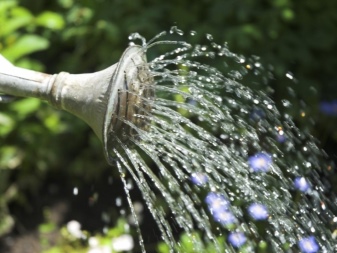
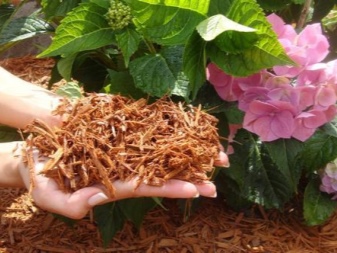
Division
The division of the bushes is carried out in summer or autumn, in extreme cases it is possible to carry out the procedure in the spring. This is especially advisable when growing valuable varieties, since in the spring it is allowed to divide the bush into smaller shares.Keep in mind that each part should include one vegetative bud or shoot that has started to grow and a small number of roots.
As soon as parts of the bush are planted again, it is important to monitor the moisture content of the soil, and to properly care for the plant. Already in the fall, you can observe flowering, although not as lush and plentiful in comparison with the well-developed cuttings planted on autumn dates.
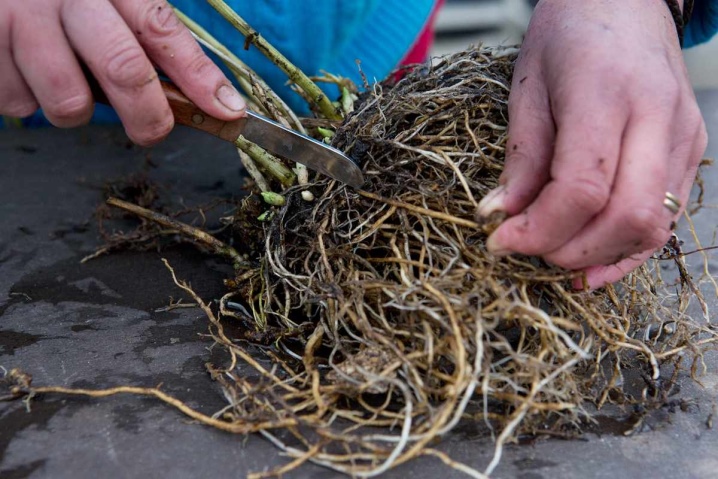
Top dressing and loosening of the soil
Before loosening and cultivation, dry fertilizing with mineral mixtures is carried out. Suitable, for example, ammonium nitrate or urea, potassium chloride or superphosphate. For active growth, development of green mass and roots, the culture is fed with compounds including phosphorus and potassium. The plant does not need constant and abundant dry fertilizers.
In the second decade of May, flowers are fed with liquid mineral and organic fertilizers. Mixtures of mullein or bird droppings, ammonium nitrate, potassium-phosphorus compounds are suitable. In late May - early June, you can add the same mixture, but increase the amount of potassium and phosphorus. From mid-June, you should reduce the amount of nitrogen. In the first days of July, flower growers apply liquid manure, and at the end of the month they fertilize the culture with mixtures containing potassium and phosphorus.

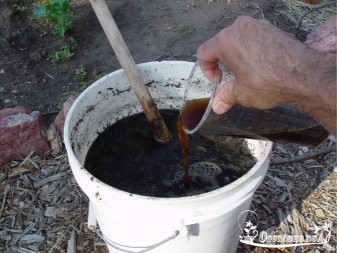
Thinning
In order to prevent thickening of the plantings, it is important to eliminate unnecessary branches and leaves in time. Then the remaining parts will be fully provided with fresh air, sun and moisture.
In spring, weak shoots should be thinned out, which have grown to 5-7 cm. Usually, the extreme shoots, which receive a maximum of nutrients and water, develop better, and the stems from the middle of the shrub become smaller due to nutritional deficiency, grow worse.
Be careful when breaking loose branches. Try not to injure the root collar, as this can lead to the death of part of the root system.
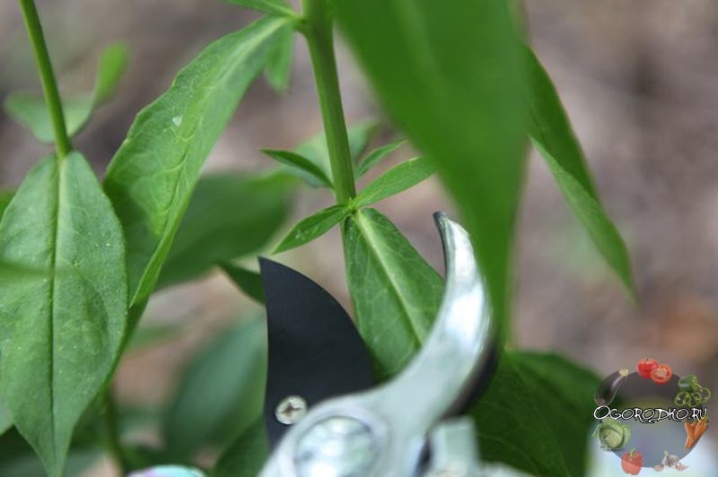
Possible growing problems
Unpleasant surprises can arise if the rules of agricultural technology and conditions of detention are not followed. So, a flower grown in a harsh climate can freeze out. To do this, you must first insulate most varieties. Once the plant has faded, it is important to remove the top of the plant. In the fall, before the onset of cold weather, all specimens are cut off at ground level and destroyed. Some growers prefer to leave small stumps, from which old flowers can develop in spring.
If the plant is grown in the middle lane, then it does not require special shelter, however, it is important to bring humus or compost under the specimens in the fall. The fact is that in the autumn period, the culture lays buds, and gradually the root begins to emerge from the ground and become bare. A layer of mulch will cover the crawled root, insulate it, and serve as additional nutrition during this difficult period. The size of the compost or humus layer depends on the age of the plant - the older and stronger it is, the thicker the layer.
The most suitable time for this procedure is the end of October - the beginning of November, just at this time the upper layers of the soil freeze slightly.
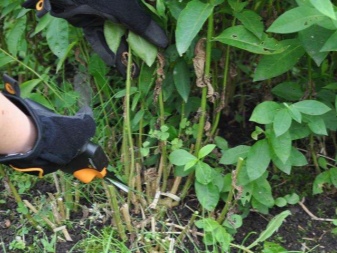
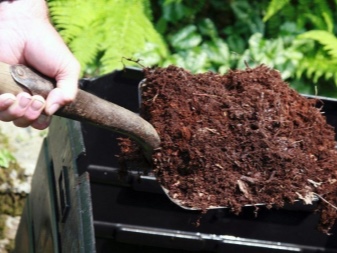
Another problem during cultivation can be the defeat of the plant by diseases. The most common viruses include annular and necrotic spotting, rattle and curly leaves, and variegation. Often phloxes are also victims of fungi, for example, powdery mildew, phomosis, rust and leaf blight.
Sometimes you can observe how the shoots are deformed, the development of the plant is inhibited. This can be caused by jaundice caused by mycoplasmas. If the flowers are infected with viruses and mycoplasmas, then they are not treated, but immediately eliminated. If the culture is damaged by a fungus, then you can save it with copper-containing products.
Sometimes the gardener can observe cracks on the stems, while the leaves wither and fly around. Finding such a phenomenon, it can be assumed that the plant is planted in too acidic soil, or the watering rules are not followed.
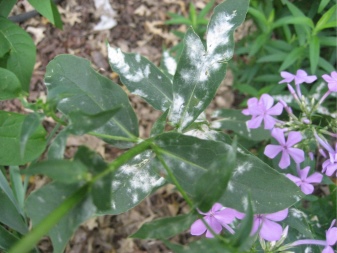
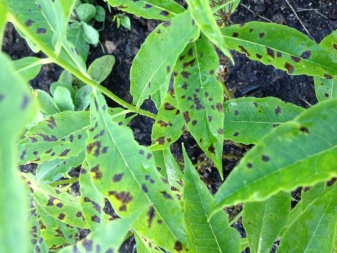
Insect attacks can be another problem. Most often, the presented culture is affected by nematodes, caterpillars, slugs, slobbering pennies. Swelling, inhibition in development, curvature of the stems speak about the invasion of nematodes. This pest is dangerous because it does not die in winter. Plants that have fallen victim to nematodes are eliminated, and the remaining space is treated with special means.
The presence of a penny is indicated by whitish discharge on the inner side of the leaf plates. The drug "Inta-vir" will help to cope with it. Caterpillars and slugs eat leaves and flowers. Slugs are destroyed with lime and metaldehyde, and caterpillars can be overcome with insecticides.
To avoid problems in flower development, it is recommended to replant perennial varieties every 6-7 years. This manipulation is designed to rejuvenate the shrub, renew its vitality, and make the flowering even richer.
If all the rules of agricultural technology are observed during cultivation, and the plant is planted in favorable conditions, then phlox can be left in one place for 10 years.
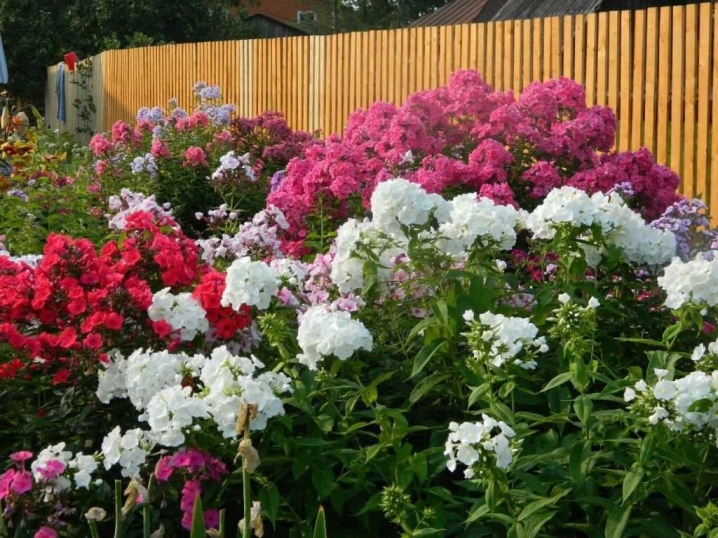
For phlox care secrets, see the next video.







































































































The comment was sent successfully.